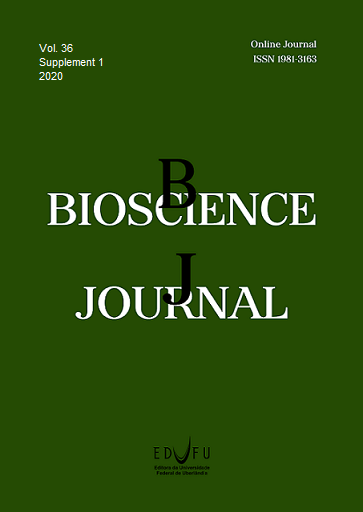Testing accession genetic composition of a germ-plasm bank for mangabeira (Hancornia speciosa)
DOI:
https://doi.org/10.14393/BJ-v36n0a2020-48256Keywords:
Genetic resources, Genetic variability, Hancornia speciose, MangabaAbstract
The objective of the current study was to measure the genetic variability of natural populations of Hancornia speciosa using RAPD type molecular markers to assay variation in existing sampled genotypes, using morphological variables, and so assess germplasm bank composition. Morphological and chemical characteristics H. speciosa fruits and seeds were evaluated using descriptive statistics and principal components analysis. Cluster analyzes was conducted using Jaccard's similarity index, via the UPGMA hierarchical agglomerative method. Phenotypic variability was found in the two studied populations. However, variability was higher in the São Judas population, where the variables: pulp yield and soluble solids content were higher than those in the Canaã population. High genetic variability was found in both study populations, and between- and within-population morphological and genetic variation was present in the studied populations. The nine primers generated 70 bands, of which 68 were polymorphic, with the primers A-08 and C-04 generating the highest number of polymorphic bands. The two populations differ principally in the pulp ratio and the proportion of total solids in the pulp (°Brix). RAPD markers used gave acceptable results and, to initiate the Federal University of Tocantins Active Mangaba Germplasm Bank, seven genotypes were sampled from the Canaã population and five from the São Judas Tadeu population.
Downloads
Published
Issue
Section
License
Copyright (c) 2020 Ronaldo Rodrigues Coimbra, Danielle Pereira dos Santos, Wagner de Melo Ferreira, Waldesse Piragé de Oliveira Junior, Elainy Cristina Alves Martins Oliveira

This work is licensed under a Creative Commons Attribution 4.0 International License.





